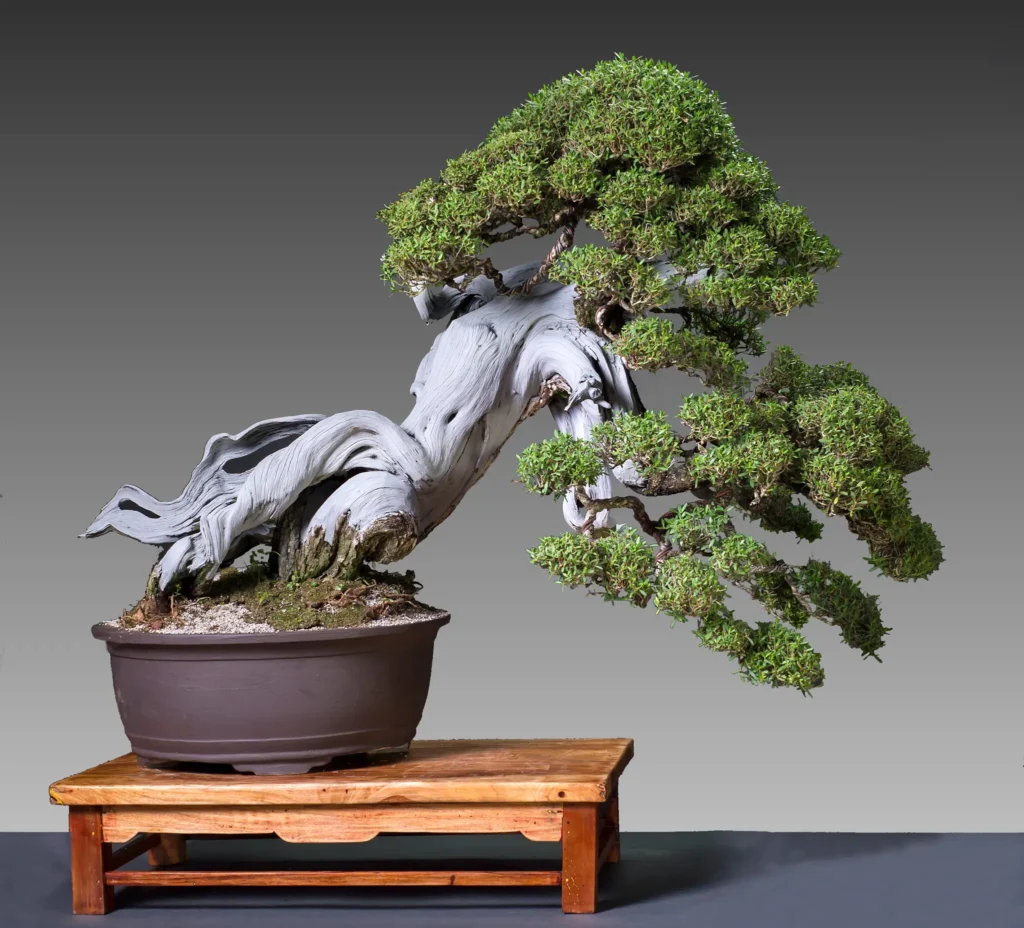Reliable Bonsai wiring
Reliable Bonsai wiring
The use of wire, both aluminum and copper, in Bonsai art design is a recent development that originated in the 20th century. Before the advent of wire, string and rope were utilized to assist in the aesthetic design of Bonsai. The use of rope for binding and shaping plant material is thought to date back to the Heian period (794-1185AD) and was primarily used for maintaining and designing larger garden plant material known as niwaki in Japanese.
Bonsai wiring In contemporary Bonsai design:
Bonsai Wiring serves two distinct purposes – for developmental reasons and for exhibition purposes. Depending on the objective, whether it’s immediate or long-term, Bonsai trees should be wired accordingly. It is not so much the physical application of wire that differs based on the intended purpose (although less wire is utilized when exhibiting), but rather the placement of branches after the wire is applied that varies.
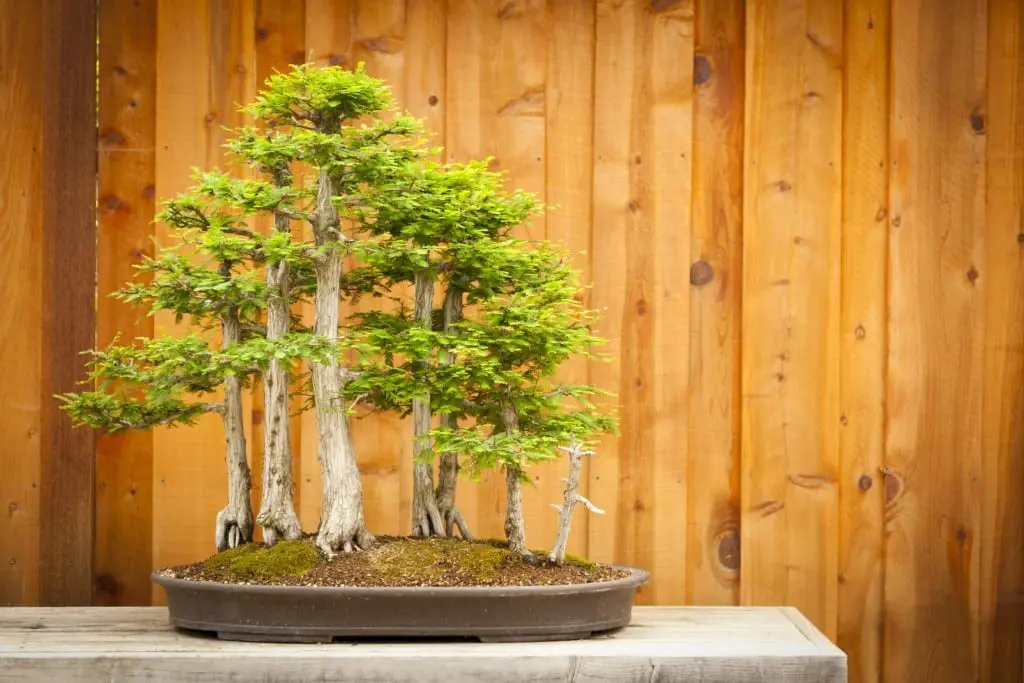
Crucial component : Bonsai Wiring
The crucial component of any Bonsai, whether it’s deciduous or evergreen, is the inner growth, specifically the weak inner buds and leaves.
Points to Remember in Bonsai Wiring.
These parts are necessary as they provide a location to cut back to and prevent branches from growing outward and causing a leggy effect, which can render the tree useless as a Bonsai. To avoid grafting techniques, which can reduce the size of the Bonsai, it’s essential to strengthen these weak areas. This can be achieved by allowing light and air to reach the inner parts of the plant, using techniques such as outer canopy defoliation for deciduous trees and removal of old foliage for evergreen species.
Wiring the branches is also a great technique to promote the exposure of inner buds and leaves to strengthening elements. To achieve this, each branch or pad should be wired in a fanned-out, hand-shaped manner, which will better expose them to sunlight. When left unwired, Bonsai branches tend to grow upwards, which shades out the inner areas and weakens and kills the buds and leaves. Therefore, when wiring trees for developmental purposes, forcing branches downward will also better expose them to light and air.
Wiring in this manner will encourage the growth of dormant buds towards the interior of the plant, which will eventually become the necessary cut-points for new branches as the outer branches grow too long and leggy. This allows for the maintenance of the compactness of Bonsai over an extended period of time. It’s best to employ this type of wiring and design during the developmental stages of the Bonsai or when the tree becomes weak. This will ensure the tree’s health when it comes time to exhibit it in the future, at which point a different wiring approach may be used to make the Bonsai more aesthetically pleasing when shown. The right Bonsai tools and equipment can significantly help in wiring trees properly.
Bonsai Wiring For Exhibition:-
Wiring for exhibition purposes in Bonsai focuses on achieving aesthetic design goals rather than the health of the inner buds and leaves. The goal is to create a fuller appearance of the tree, especially from the intended viewing angle, which is usually the front. Branches and foliage may be slightly overlapped or crossed to fill out the tree, but extreme measures are avoided. To create a rounded effect, wire is used to lightly overlap secondary and tertiary growth, and each individual branch or pad is placed on a different visual plane to create visual interest. Balancing the overall Bonsai and the individual pads themselves is crucial in achieving a visually appealing design. The apex is the most difficult part of the tree to design, and a rounded effect is usually desired to make the Bonsai appear older and more powerful. The foliage is directed towards the front viewing angle to give the apex a fuller appearance, but a bald spot towards the rear of the apex is acceptable and often seen in Bonsai exhibited at the Japanese Kokufu-ten Exhibition. When wiring for exhibition, the appearance of the sides of the tree must also be considered to create visual depth in the composition.
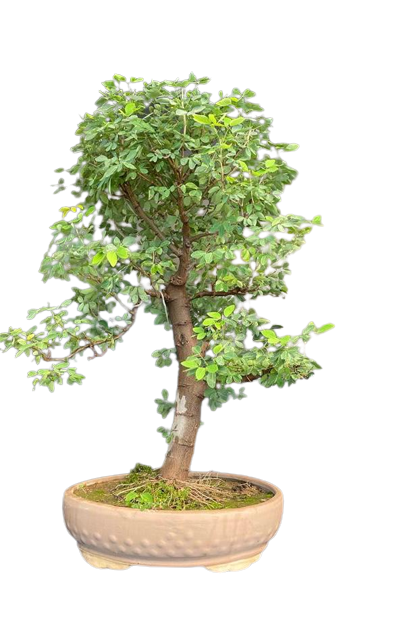
Bonsai Wiring Tips & Tricks:
In summary, wiring is an important technique used in Bonsai design to shape and guide the growth of branches and foliage. When wiring a Bonsai, it is important to consider the health of the tree and not to apply too much pressure that may damage the tree. Wiring for exhibition purposes is focused more on aesthetics and aims to give the Bonsai a fuller appearance from its intended viewing angle. It is important to balance the overall composition of the Bonsai by placing branches and foliage on different visual planes to create visual interest. Lastly, applying basic wiring and branch placement techniques early on in the Bonsai’s development is crucial for its long-term health and for achieving a Bonsai worthy of exhibiting.
Shaping Bonsai using Bonsai Wiring Technique.
Bonsai is an art form that requires patience, attention to detail, and skill. One of the most important techniques in bonsai cultivation is shaping the tree using bonsai wire. This technique allows the grower to create a desired shape or style by bending and shaping the branches and trunk of the tree. In this article, we will guide you through the process of shaping bonsai using bonsai wire.
What is Bonsai Wire?
Bonsai wire is a specialized tool used to shape and manipulate the branches and trunk of a bonsai tree. It is typically made of aluminum or copper and comes in various sizes and thicknesses depending on the size and type of bonsai tree. The wire is wrapped around the branch or trunk of the tree and then gently bent into the desired shape.
How to Choose the Right Bonsai Wire?
Choosing the right bonsai wire is crucial for successful shaping of the tree. The wire must be strong enough to hold the branch or trunk in place but not too thick that it damages the bark or causes scarring. The thickness of the wire should be approximately one-third the diameter of the branch or trunk that it is being used on. It is important to choose the right size wire as using wire that is too thin or too thick can lead to problems during shaping and potentially harm the tree.
The Process of Shaping Bonsai Using Bonsai Wire
Step 1: Choose the Branches to be Wired
The first step in shaping bonsai using bonsai wire is to identify the branches that need to be wired. These are usually the branches that need to be moved or bent to achieve the desired shape. Care should be taken not to wire too many branches at once as this can lead to overcrowding and damage to the tree.
Step 2: Wrap the Wire Around the Branch
Once the branches to be wired have been identified, it is time to wrap the wire around the branch. The wire should be wrapped around the branch in a spiral motion, starting at the base of the branch and working towards the tip. The wire should be wrapped tightly enough to hold the branch in place but not too tight that it damages the bark.
Step 3: Shape the Branch
Once the wire is in place, the branch can be gently bent into the desired shape. Care should be taken not to over-bend the branch as this can lead to breakage or damage. It is important to monitor the tree closely during the shaping process to ensure that the wire is not cutting into the bark and causing damage.
Step 4: Remove the Wire
After a few months, the wire can be removed from the tree. Care should be taken to remove the wire gently and slowly to avoid damaging the bark. It is important not to leave the wire on the tree for too long as it can cut into the bark and cause scarring.
Conclusion
Shaping bonsai using bonsai wire is an important technique in bonsai cultivation. It requires patience, attention to detail, and skill. Choosing the right wire, identifying the branches to be wired, wrapping the wire around the branch, shaping the branch, and removing the wire are all crucial steps in the process. By following these steps, you can create a beautiful, healthy bonsai tree that will be a joy to behold for years to come
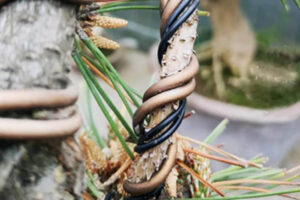
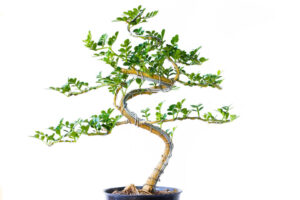
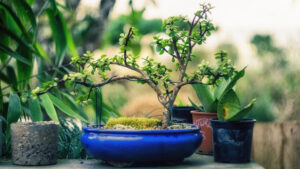
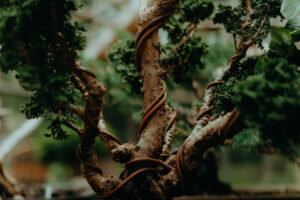




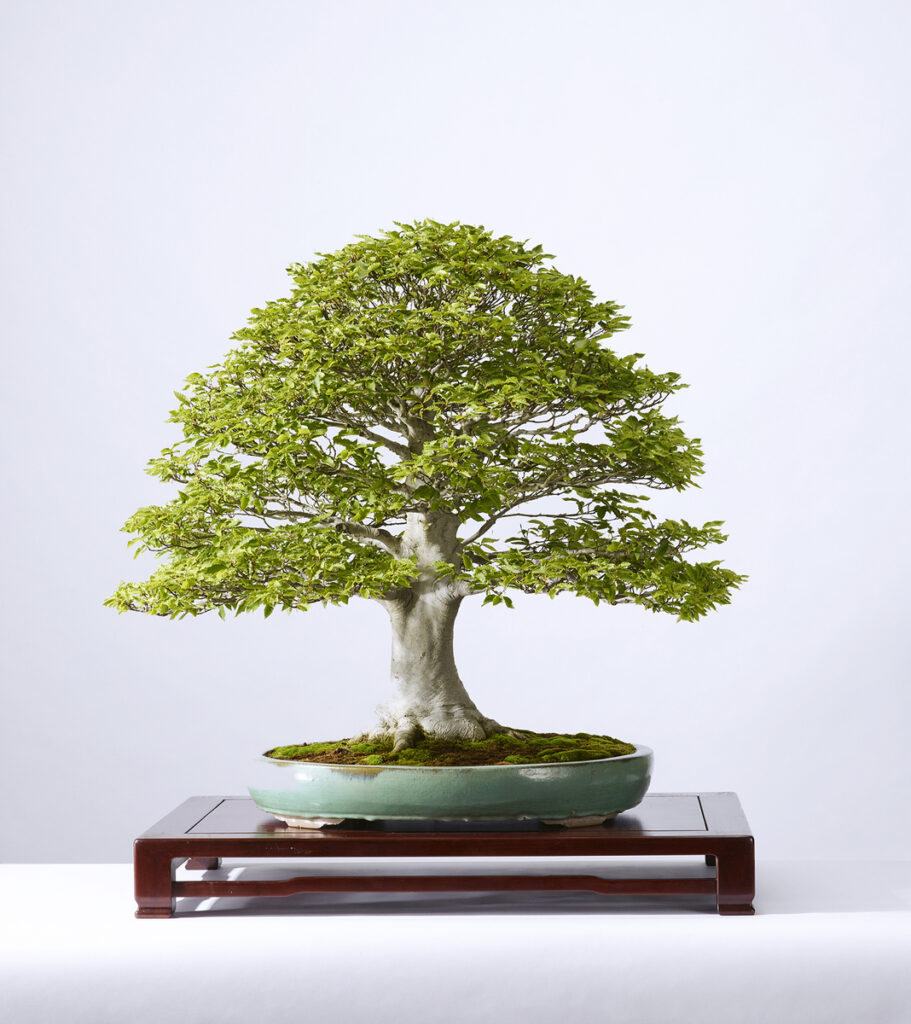
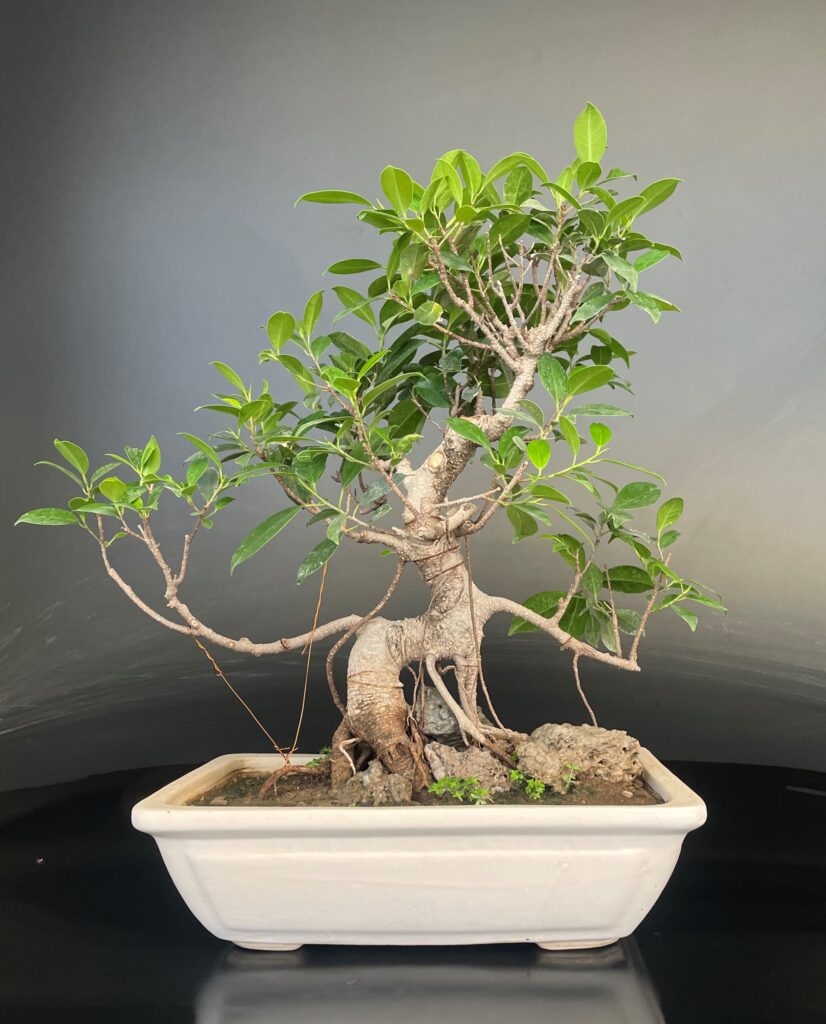
Bonsai Wiring FAQs.
What kind of wire is used for bonsai?
Ans: Aluminum or copper wire of various gauges , depending upon strength of branch.
How old should a bonsai be before wiring?
Ans: 3-4 Years old
How do you wire down a bonsai tree?
Ans: Double wiring Technique or putting weight with wire , tied to branch.
Can you use garden wire for bonsai?
Ans: Yes
Why is a good bonsai wiring technique important ?
Ans: To attain desired shape, and to avoid marks on branches.
How is a bonsai wired correctly ?
Ans: Detailed technique explained above.

